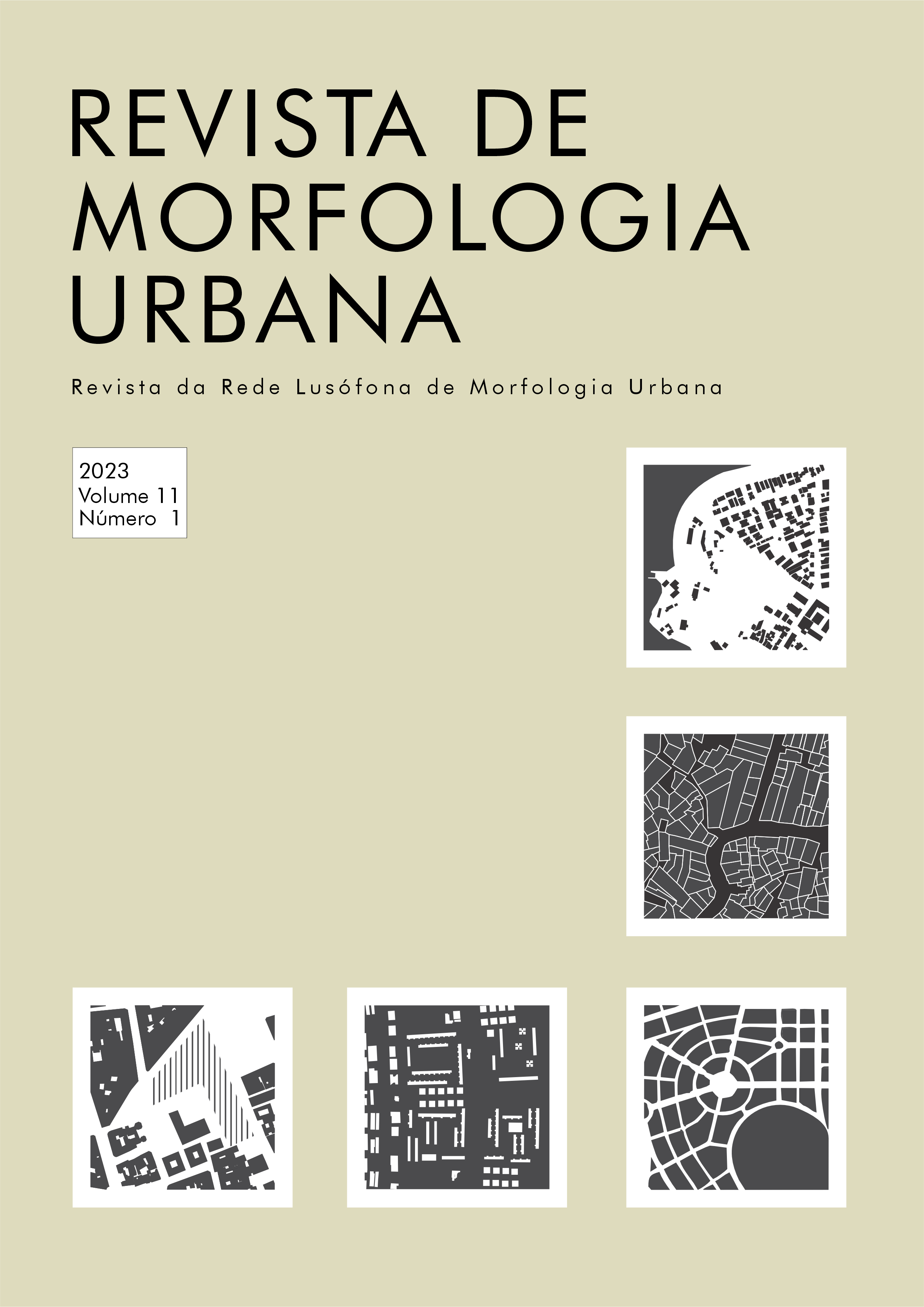Abstract
Vegetation restoration is considered an important structural action capable of balancing human needs and the natural dynamics of water bodies affected by disorderly urban growth. Bearing in mind that virtually all rivers have already suffered some environmental impact, not only the importance of restoration projects in degraded urban rivers is highlighted, but also the need for temporal monitoring of implemented solutions. Therefore, this research aims to explore the use of Geographic Information Systems in a Brazilian river rehabilitation project (Projeto Pró-Tijuco, in São Paulo), in order to investigate the success of the implementation of the landscape project and demonstrate the possibilities of tool use. The analysis methodology relies on remote sensing on Planet satellite images, in the ArcGIS geoprocessing software. Vegetative density was mapped using a supervised classification method and then the NDVI index was applied. The results showed the spread of vegetation associated with river rehabilitation, as well as a significant evolution of vegetation within the evaluated time frame. Finally, the mappings explore the importance of vegetation in river rehabilitation projects, given its ability to positively impact the monitoring of the quality of the urban environment.
References
Abreu, K. M. P. de and Coutinho, L. M. (2014) ‘Sensoriamento remoto aplicado ao estudo da vegetação com ênfase em índice de vegetação e métricas da paisagem’, Revista Vértices, 16(1), pp. 173–198. doi: 10.5935/1809-2667.20140012.
Baptista, M. V., Scarpinella, G. D. and Menezes, D. B. (2021) ‘Idas e vindas do processo de degradação e recuperação de um córrego urbano’, Iii Simpósio Nacional De Gestão E Engenharia Urbana [Singeurb 2021], 3, pp. 87–95. doi: 10.46421/singeurb.v3i00.1115.
Battemarco, B. et al. (2018) ‘Open Space Systems and Urban Drainage?: an Example of Integration Between Sustainable Rainwater Management and Urban Planning’, Paisagem e Ambiente, (42), pp. 55–74.
Ferreira, L. G., Ferreira, N. C. and Ferreira, M. E. (2008) ‘Remote sensing of vegetation: Evolution and state of the art | Sensoriamento remoto da vegetação: Evolução e estado-da-arte’, Acta Scientiarum - Biological Sciences, 30(4), pp. 379–390. doi: 10.4025/actascibiolsci.v30i4.5868.
Figueirôa-ferreira, V. G., Augusto, R. and Fernandes, S. (2021) ‘Fragmentos de infraestrutura verde?: o caso do córrego Tijuco Preto Fragments of green infrastructure?: the case of the Tijuco Preto stream Fragmentos de infraestructura verde?: el caso del arroyo Tijuco Preto’, pp. 230–242.
Gorski, M. C. B. C. B. (2008) Rios e cidades: ruptura e reconciliação. 1.ed. Senac São Paulo.
Herzog, C. (2010) ‘Infra-Estrutura Verde Para Cidades Mais Sustentáveis’, Teoria E Prática Em Construções Sustentáveis No Brasil - Projeto Ccps, pp. 1–30.
Kaplan, G. and Avdan, U. (2017) ‘Object-based water body extraction model using Sentinel-2 satellite imagery’, European Journal of Remote Sensing, 50(1), pp. 137–143. doi: 10.1080/22797254.2017.1297540.
Kozak, D. et al. (2020) ‘Blue-green infrastructure (BGI) in dense urban watersheds. The case of the Medrano stream basin (MSB) in Buenos Aires’, Sustainability (Switzerland), 12(6), pp. 1–30. doi: 10.3390/su12062163.
Labaki, L. C. C. et al. (2011) ‘Vegetação e conforto térmico em espaços urbanos abertos.’, FÓRUM, 4(March 2014), p. 18.
Lähde, E., Khadka, A. and Tahvonen, O. (2019) ‘Can We Really Have It All??— Designing Multifunctionality with Sustainable Urban Drainage System Elements’. doi: 10.3390/su11071854.
Li, L. et al. (2020) ‘Estimating urban vegetation biomass from sentinel-2A image data’, Forests, 11(2), pp. 1–24. doi: 10.3390/f11020125.
Lira, C. et al. (2016) Sistemas de Informação Geográfica: Análise de Dados de Satélite. Lisboa: DGRM.
Mascaró, L. and Mascaró, J. L. (2002) Vegetação Urbana. 4a edição. Rio Grande do Sul: Masquatro.
NICFI (2021) ‘Guia do Usuário’. Norway’s International Climate and Forest Initiative, p. 14 p.
Palmer, M. A. et al. (2005) ‘Standards for ecologically successful river restoration’, Journal of Applied Ecology, 42(2), pp. 208–217. doi: 10.1111/j.1365-2664.2005.01004.x.
Peres, R. B. B., Mendiondo, E. M. M. and Porto, R. de M. de M. (2005) Projeto Finep Ct Hidro: Experimento Piloto De Gerenciamento Integrado De Bacias Urbanas Para O Plano Diretor De São Carlos, São Carlos, Sp. São Paulo: Núcleo Integrado de Bacias Hidrográficas.
Peres, R. B. and Mendiondo, E. M. (2004) ‘Desenvolvimento de cenários de recuperação como instrumento ao planejamento ambiental e urbano – bases conceituais e experiências práticas’, in NEUR/CEAM (ed.) Seminário A Questão Ambiental Urbana: Experiências e Perspectivas. Brasília, DF: UnB, pp. 1–15.
Perini, K. and Sabbion, P. (2017) Urban Sustainability and River Restoration, Urban Sustainability and River Restoration. doi: 10.1002/9781119245025.
Pettorelli, N. et al. (2005) ‘Using the satellite-derived NDVI to assess ecological responses to environmental change’, 20(9). doi: 10.1016/j.tree.2005.05.011.
Portal de notícias São Carlos (no date). Available at: http://www.saocarlos.sp.gov.br/.
Ribeiro, H. J. et al. (2019) ‘Sensoriamento Remoto Em Ecologia Da Paisagem: Estado Da Arte’, Geosciences = Geociências, 38(1), pp. 257–267.
Santi, A. D. de et al. (2016) ‘Resíduos Sólidos Urbano: Percepção ambiental na microbacia do córrego do Tijuco Preto no município de São Carlos (SP)’, Revista Brasileira de Educação Ambiental (RevBEA), 11(4), pp. 29–41. doi: 10.34024/revbea.2016.v11.2088.
Silva, A. Da et al. (2020) ‘Proposta de projeto de uma edificação sustentável baseada no conceito de net zero water buildings’, Revista Gestão e Gerenciamento, 13, pp. 1–10.
Veról, A. P. et al. (2018) ‘Requalificação fluvial: conceitos e casos de estudo’, in Gestão de Recursos Hídricos e Sustentabilidade. 1.ed. Ponta Grossa (PR): Atena Editora, pp. 17–33.
Veról, A. P. et al. (2020) ‘River Restoration Integrated with Sustainable Urban Water Management for Resilient Cities’, Sustainability (Switzerland), pp. 1–36. doi: 10.3390/su12114677.

This work is licensed under a Creative Commons Attribution 4.0 International License.
Copyright (c) 2023 Julia Roizemberg Bahiana, Maria Vitória Ribeiro Gomes, Virgínia Maria Nogueira de Vasconcellos, Aline Pires Veról

